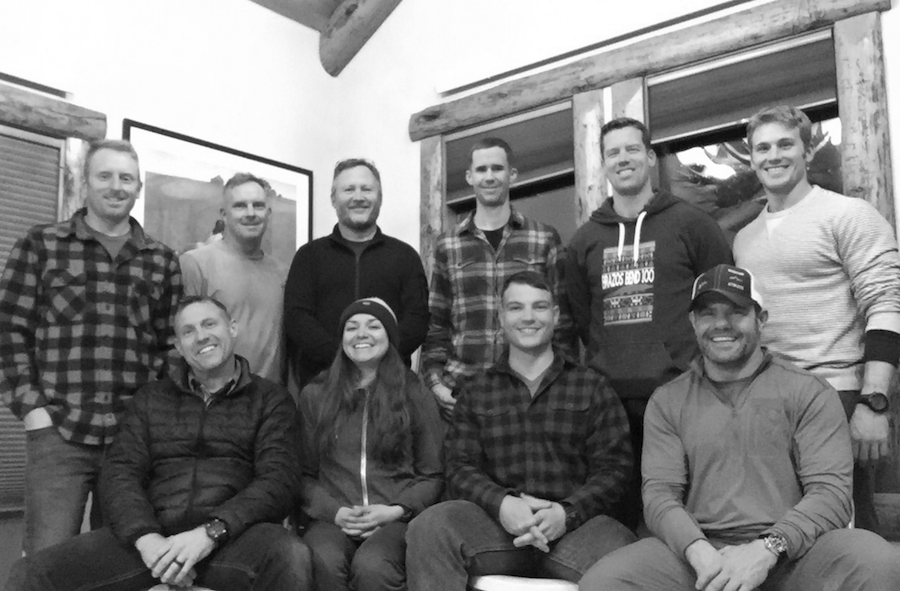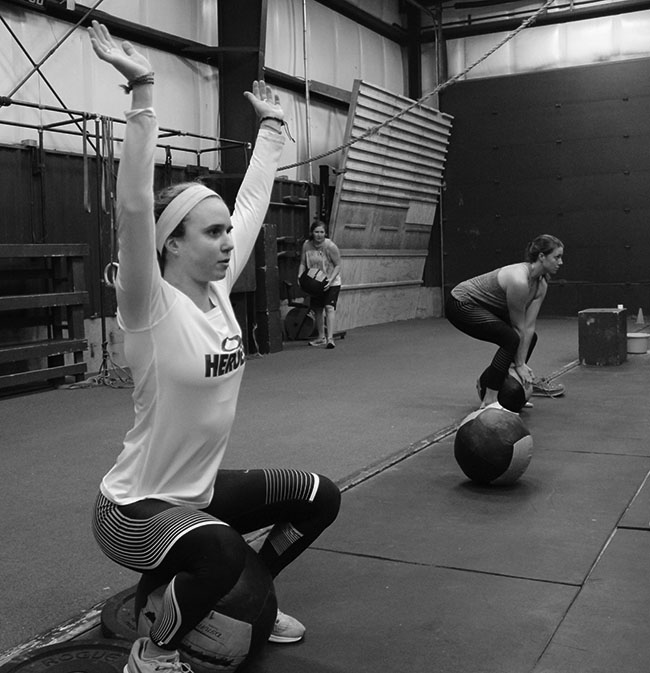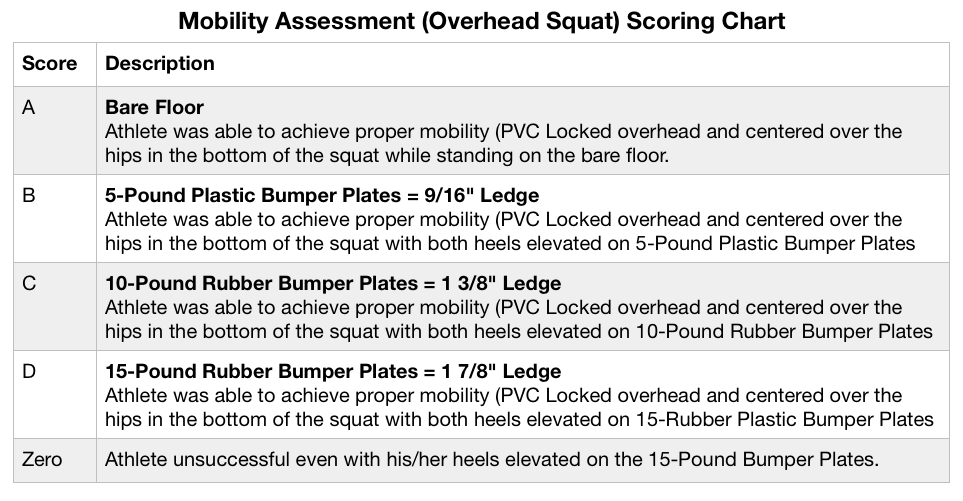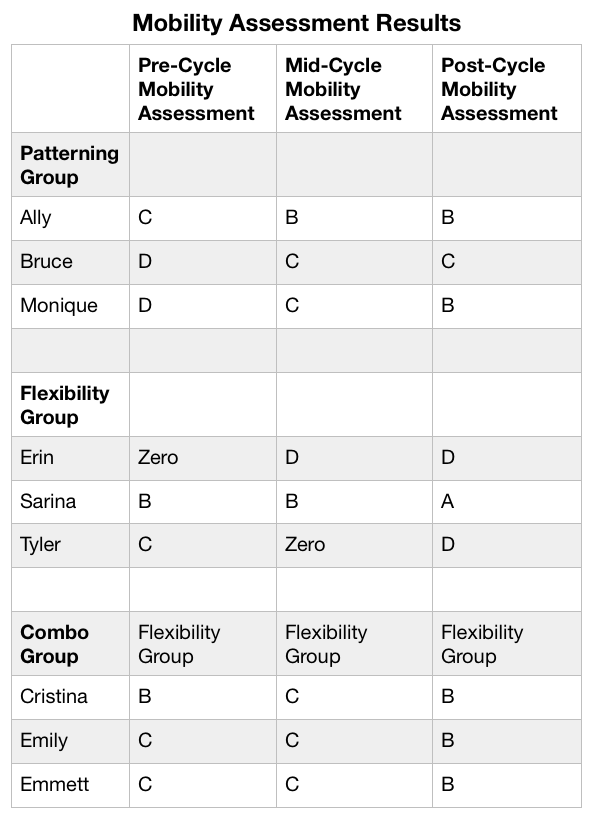KUDOS ON THE LOW BACK FITNESS TRAINING PROGRAM
“I’m in my 8th week of the low back plan after Laminectomy/Discectomy surgery last spring. The plan has worked great. A lot better results than the watered PT I was going to. As a 45 yr old swat operator in good shape, I feel a lot stronger and more flexible in my low back region than prior to the surgery. I can’t say enough about the plan and have passed your website onto my team in hopes they will use the site and have the same results.”
QUESTION
I am currently not preparing for any type of selection. I am 28 yrs old and a Paramedic. Looking for overall functional strength/endurance/flexibility. Be stronger and look better. I can’t be doing 2 work outs a day. I liked the 1hr-ish work outs of the on-ramp, 5 days a week set up.
Any help would be appreciated.
ANSWER
– Rob
QUESTION
I recently joined your site. Workouts look great and I am excited to get going. I have a question. I started and finished the first week Ultimate Work Capacity I two weeks ago. I had to stop as I contracted the flu and it floored me. So I just got back in the gym today and did a light workout. My question is, should continue where I left off? Instinct tells me to start over as I was only a week in. Little history on me, I stay in decent shape. Army veteran and have been federal law enforcement for the past 12 years. I appreciate your time.
ANSWER
You’re thinking right. Re-start the program.
– Rob
QUESTION
Hello, Im looking for a good strength program to supplement that ARMY APFT Plan I have purchased. I have just recovered from a knee scope and believe the APFT plan will be a good plan to get me back to my running shape (Im able to complete the distances just not as fast as I’d like). However I also need a plan to gain strength back specifically in quads, glutes, hamstrings….basically my whole leg as i have a considerable imbalance between my legs and want to resolve that issue to avoid injury from it. Thank you for all the material you guys provide.
ANSWER
Better would be to complete the Running Improvement Training Plan, which combines running and focused lower body strength work.
If you want to continue with the APFT plan, pair it with
TLU Strength. Alternate plans and training days – i.e. ….
Mon- APFT
Tue – TLU
Wed – APFT
Thur – TLU
Fri – APFT
Etc. …..
– Rob
QUESTION
I’m interested in purchasing an athlete subscription, and I would like to start with the Rat 6 Strength program. I would just like to know if that program only prescribes front squats or if it also includes back and front squats. Do any programs prescribe overhead squats as well?
ANSWER
As prescribed
Rat 6 Strength includes the Front Squat and Hinge or Box Squat (athlete’s choice) for lower body, and the Power Clean and Squat Clean for total body.
I’d consider the Overhead Squat a Total Body lift – so you could substitute it for the Squat Clean in the plan, and do the Box Squat – which is close to the Back Squat.
– Rob
QUESTION
Hi Coach. I’m trying to determine which plans would supplement my training as I prepare for climbing season. Ideally I could make a plan, or combine plans, I could follow year round, with specific workouts to focus on the activities I plan to pursue for that season.
Current fitness level:
I haven’t done the alpine fitness test yet. If I had to estimate, I would be around 90.
Planned Activities:
January – April: Back Country Skiing, Ice Climbing
May – July: Glacier mountaineering
August – October: Rock Climbing
November – December: General fitness/hiking, lift assisted skiing
I’m currently doing both Skiing and Climbing. Current work out plan is:
Monday: Rest
Tuesday: AM – weights (step up, step down, push up, pull up). PM – Climbing
Wednesday: PM – Hiking, 3.5 miles, 2200 ft gain, 25# pack
Thursday: PM – Running – 1 hour, 6 miles.
Friday: AM – weights (step up, step down, push up, pull up). PM – Climbing or skiing
Saturday: AM- Hike, 3000′ gain, 6 miles, approx 3 hours. PM Skiing
Sunday: AM – Hike, 4000′ gain, 7 miles, approx 4 hours. PM Skiing
It’s about 80% lift assisted, and 20% BC. Every few weeks we do a BC day to replace an AM hike
ANSWER
In general, the closer you get to a season or climb, the more sport specific your programming should be. So, in the weeks before lift-assisting skiing starts, you should complete the Dryland Ski Training Plan. In the weeks before your Glacier Mountaineering trip, you should complete the Big-Mountain Training Plan, etc.
In the spaces between these sport-specific train ups, your training should be more general – but not random. We call this “Base Fitness” and we have specific programming for Mountain Base Fitness which concurrently trains strength, work capacity, chassis integrity (core), climbing fitness (rock) and mountain endurance (running, uphill movement under load).
Base Fitness programming is designed to reset base fitness, strength, etc. Constant sport-specific training will lead to mental burnout and overtrain.
This is how our programming is designed. Our Base Fitness programming is found in the Greek Heroine Plans, and the sport specific plans we have are designed to be completed directly before the season. Multi-sport mountain athletes like your bounce back and forth between the Base Fitness plans and the sport specific plans. Essentially the calendar and upcoming sports/season determine your training at any one moment.
Importantly, even though our Mountain Base programming addresses the major areas of mountain sport fitness demands, it is too general for super effective pre-season fitness programming. In other words, I haven’t found one base fitness programming approach which does of training mountain athletes to be fully prepared for all the mountain sports. Many athletes want this. Our laser-focused, sport-specific pre-season training plans do a much better job of this.
Your current programming is doing a good job of preparing you for your April BC skiing, but you may be doing the focused programming too early. Most of our sport-specific plans are 6-8 weeks long. Also, you’re not training for April’s Ice Climbing. From a durability perspective, I’d like to see some heavy strength training 1-2x/week.
In the spaces between and in the midst of seasons where you’re weekend warrioring … complete the Mountain Base Fitness programming in the Greek Heroine Plans.
– Rob
QUESTION
It’s been a while since we last spoke. I just graduated from Marine Corps boot camp and I leave for camp Pendleton for MCT on Tuesday next week. MCT is a month long and I should be leaving for my MOS school around the 24th of February. I was just wondering on how I should approach my training for the rest of the year. I was thinking about following the Greek Hero series but I don’t know if I should do the MTI Relative Strength Assessment Plan and then build from there. If you could give some insight into this that would be helpful.
ANSWER
– Rob
QUESTION
I am in the first week of the program and am having some issues w pain just above my knee during the Quadzilla Complex. I assume it is quad tightness so am rolling quads and legs more and trying to improve mobility.
Today, I also substituted 20” step ups (weighted and unweighted) alternating single leg box jumps and regular box jumps which were fine.
I was wondering if you had any suggestions or better substitutions. I am not a competitive skier and am doing the program to get ready for a family ski trip in early March.
Thanks a lot
ANSWER
Try the Leg Blaster as an alternative. The
Leg Blaster is similar but unloaded. Use the same rep scheme for each exercise in the complex as prescribed in the program.
– Rob
QUESTION
I’ve been following your daily operator sessions for a few months now. I am a big fan of the programs and my results are proof that I will continue training of your programs.
I recently was selected into the Leadville 100 MTB race. I looked over your mountain bike preseason training program and was wondering how you would adapt it to a 100 mile race. Or what suggestions you would have for my training leading up to the race.
I live in Aspen,CO. so I feel its a pretty similar landscape and training environment to Jackson. Which lead me to another question: the gym I train in does not have space for running. Alot of your programs have sprints spread throughout. I would love to do the sprints, but the gym and outside environment are very limiting this time of year. What would you substitute for sprints?
Thank you for your time,
ANSWER
I don’t have a plan for the Leadville 100 – nothing with that much volume. What you could do from our stuff is the
100 Mile Ultra Plan – and sub spinning/biking for the running in the plan – same mileage. Your performance in this race will depend upon your sport-specific aerobic base (cycling) and your sport-specific muscle endurance for cycling (legs). Also – fueling – one good thing about the 100-mile plan is you’ll be cycling for lots and lots of miles, so you’ll have plenty of opportunities to dial in your refueling nutrition.
Best to put in your mileage will be mountain biking to simulate the vertical, decline and technical work. Look for a short and a medium distance loops with good vertical gain/loss and do laps to make it easier to complete the mileage.
Sprint sub? This is basically leg-based interval training – so you can sub in box jumps or touch/jump/touch efforts. When you make the sub think time, not distance. For example, if the plan calls for 20 rounds of a suicide shuttle every 30 seconds, it takes about 15 seconds to do a suicide, do 20 rounds of 15 sec box jumps, 15 sec rest.
– Rob
QUESTION
I’m a year away from Canadian Sar Tech Selection, it happens in February in Jarvis Lake, AB. It’s very cold up there and I would just like some more advice. Selection is 2 weeks long, the first week is where there’s a lot of instructors yelling and making you do physical activity to try and break you, things like your pushups and sit-ups and running around, all while wearing winter kit and your other gear. The second week will be under a ruck in teams of 3 or 4 surviving for 3 days followed by another 4 days of individual survival.
After selection the Sar Tech course starts in June or July and is 11 months long doing a lot of swimming, running, and a lot of hiking in the mountains as well as jumping and other search and rescue stuff. Sorry for the long email, but I would just like your professional opinion on which plans I should start running with?
ANSWER
Do more research on the selection. Is there an entrance “gate” PT test? Is there an entrance “gate” ruck run? Is there any water confidence/pool work? Are there any unusual exercises/events? Be resourceful and email back with what you find.
QUESTION
I just broke my foot and have to keep it in a removable boot for 6 weeks. Do you have any suggested plans for me to follow, that will keep the rest of my body in shape (but not too out of balance) while my foot recovers? The end goal is to attend Ranger school next winter.
I completed the “Military On-Ramp” and the first 4 weeks of Humility V2 (up to session 20) prior to breaking my foot this past Friday. My plan was to progress through all the ranger school training packet plans prior to attending Ranger school.
ANSWER
– Rob
QUESTION
I’ve spent the past 6 months rehabbing hip/glute issues from poor running mechanics. I’m cleared by PT but unsure where to begin to jump back in.
The pre-season Ultra plan is a too intense for now as I haven’t run greater than 3 miles in 4 months and the rehab leg plan doesn’t include any running. Advice on where to begin? I’m a (struggling) ultra/skyrunner.
ANSWER
QUESTION
I am attending Ranger selection program for national guard in April and was looking at doing your ranger program. From what I know it’s a 2 week version of the actual ranger school. Ranger physical fitness, I don’t think they do daily pt. I’m in relatively good shape I am a civilian fireman, just wanting to know your recommendation if I should go 100% at the ranger program from the get-go or ease into the 1st week? Any suggestions would be appreciated.
ANSWER
– Rob
QUESTION
I am going to be starting the BIG 24V4 strength training soon coming off an endurance phase. I previously did your MTI relative strength program and fought the heavy weight through the short 1:30 timeframes you specified.
However, there is no prescribed rest period or time set indicated for the BIG 24. What do you recommend for rest periods for this program?
ANSWER
As much needed to get the next set. Each circuit includes a stretch/motility drill – this is your working rest. At the beginning of the cycle, we were finishing in 50 minutes. At the end – top of the progression – sessions were taking 70-75 minutes. The strength work is very intense.
– Rob
QUESTION
I am trying to begin my career as a Fitness Coach. I subscribe to the MTI Athlete Subscription and feel as though I have truly found the programming I have been looking for for quite some time now. I have done the typical body building workouts in the gym and some power lifting but it was never quite satisfying enough and I tried CrossFit for a little while but I felt the programming was a little too sporadic, the goal objective was too general, and there was a lack of emphasis on real endurance. I believe in functional fitness that carries over into the real world. The gym is more my “me time” where I train to over come obstacles and challenges the real world wants to throw at me. Everything I read on the MTI website was right in line with the way I view working out and that is exactly why I enjoy your programming because no matter how much a workout might suck I can see the transfer of my improvements in my day to day outside of the gym and I want to become a coach that can successfully pass on those feelings to future athletes. I was reading your article “Advice to New and Young Strength and Conditioning Coaches” and one thing I am working hard to get better at is programming. You hit on the issue a lot of people don’t understand the basics of progression or programming. I was wondering if you had any suggestions for programming-focused books to help me develop my ability to successfully program for athletes?
ANSWER
Here’s a start ….
Practical Programming, Rippetoe
Athletic Development, Gambetta
The Coach’s Strength Training Playbook, Kenn
Bigger Faster Stronger, Shepard
– Rob
QUESTION
I’m In the process of beginning my training to go to Marine Recon school and want to know which plan is best for that.
ANSWER
Swimming and water confidence a huge source of attrition – so between now and then I’d recommend the plans and order in our
Pirate Series of plans for SOF/LE with water-based mission sets. These plans concurrently train strength, work capacity, chassis integrity, tactical agility and endurance (running, swimming, rucking).
Together, the BRC plan and Pirates Plans account for 39 weeks of programming – so almost 10 months.
– Rob
QUESTION
I completed the Big Mountain program and successfully summited Aconcagua on Jan. 8. I was very satisfied with the program and felt physically very strong. I never once felt strained at all from the physical demands.
I was looking for a plan to do moving forward. My goals are to continue to maintain and improve on the fitness I obtained from the BM program. I am an avid climber, backcountry skier, and mountaineer. My only specific goal is to climb 5.13. I am also enrolled in the AMGA Rock Guide course in October 2018. I’m looking for a plan that would help me stay strong in these areas of interest. Suggestions?
ANSWER
Now I’d recommend the plans and order in the
Greek Heroine series of plans for Mountain Base Fitness. These plans concurrently train strength, work capacity, chassis integrity (core), climbing fitness (rock) and mountain endurance (running, uphill hiking under load).
– Rob
QUESTION
I’m looking for a new mountain program to be in elk and sheep hunting shape this fall. Any recommendations? I currently workout at the gym a min of 3 times a week but not sure if I wanted to start a new program now or in the early summer.
ANSWER
If you want to start working toward that direction now, complete the plans and order in
Back Country Big Game Training Packet. You’ll see the final plan in the packet is the plan I mentioned above.
– Rob
QUESTION
So I’m an older(58) athlete that is looking to improve my rock climbing endurance and my general fitness to boot. I have access to a gym, bouldering walls and a Hangboard. The only roped routes I have access to is 50 miles away and I could only get there once a week. Any suggestions?
ANSWER
I’d recommend the plans and order in the
Greek Heroine series of plans for Mountain Base fitness. These plans concurrently train strength, work capacity, climbing fitness (rock), mountain endurance (running, uphill hiking under load), and core. chassis integrity (core).
– Rob
QUESTION
I am a Marine Corp Military Police Officer, I’ve been using your site for the last 2 months. I have enjoyed the workouts I have been doing, but I’ve been using different ones just trying to find one that is right for me. I am trying to find a plan that fits my goals which are to gain muscle and add size, but also become more well rounded in terms of strength stamina and endurance. I was wondering what plan you might suggest I try?
ANSWER
Train for your job as and complete the plans and order in the “
Spirits Series” for LE Patrol/Detective. These plans concurrently train strength, upper body hypertrophy (mass), work capacity and tactical agility.
– Rob
QUESTION
I am Regimental NCO returning to RASP II and currently in week two of the program. Due to family constraints the Saturday long ruck/run sessions are often hard to make. Is there a potential to substitute Fridays interval ruck with the ruck/run without major negative impact? If not, I will figure it out. Please let me know your thoughts / any input.
ANSWER
No. Do the long ruck/runs on Friday.
– Rob
Subscribe to MTI's Newsletter - BETA





